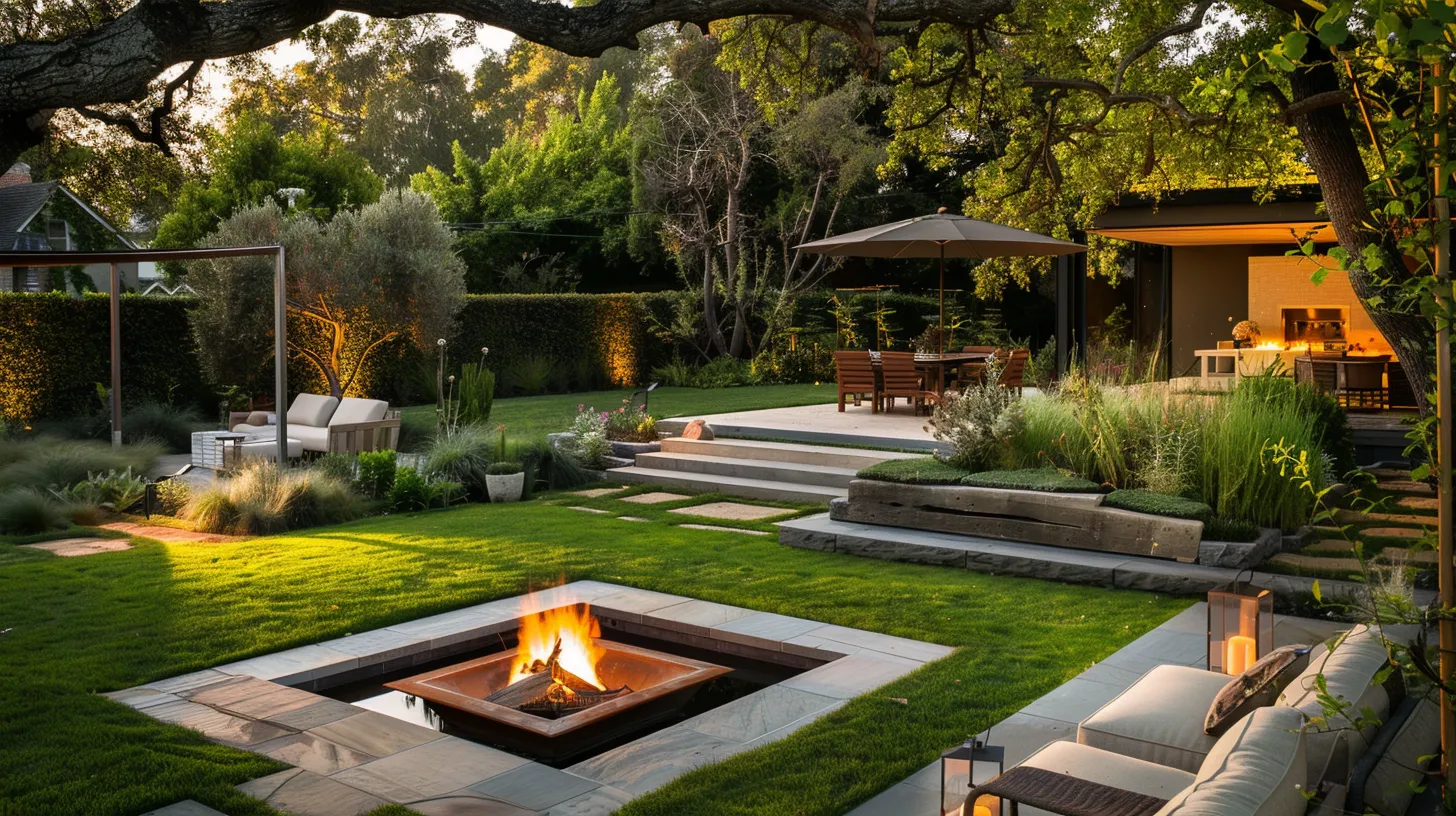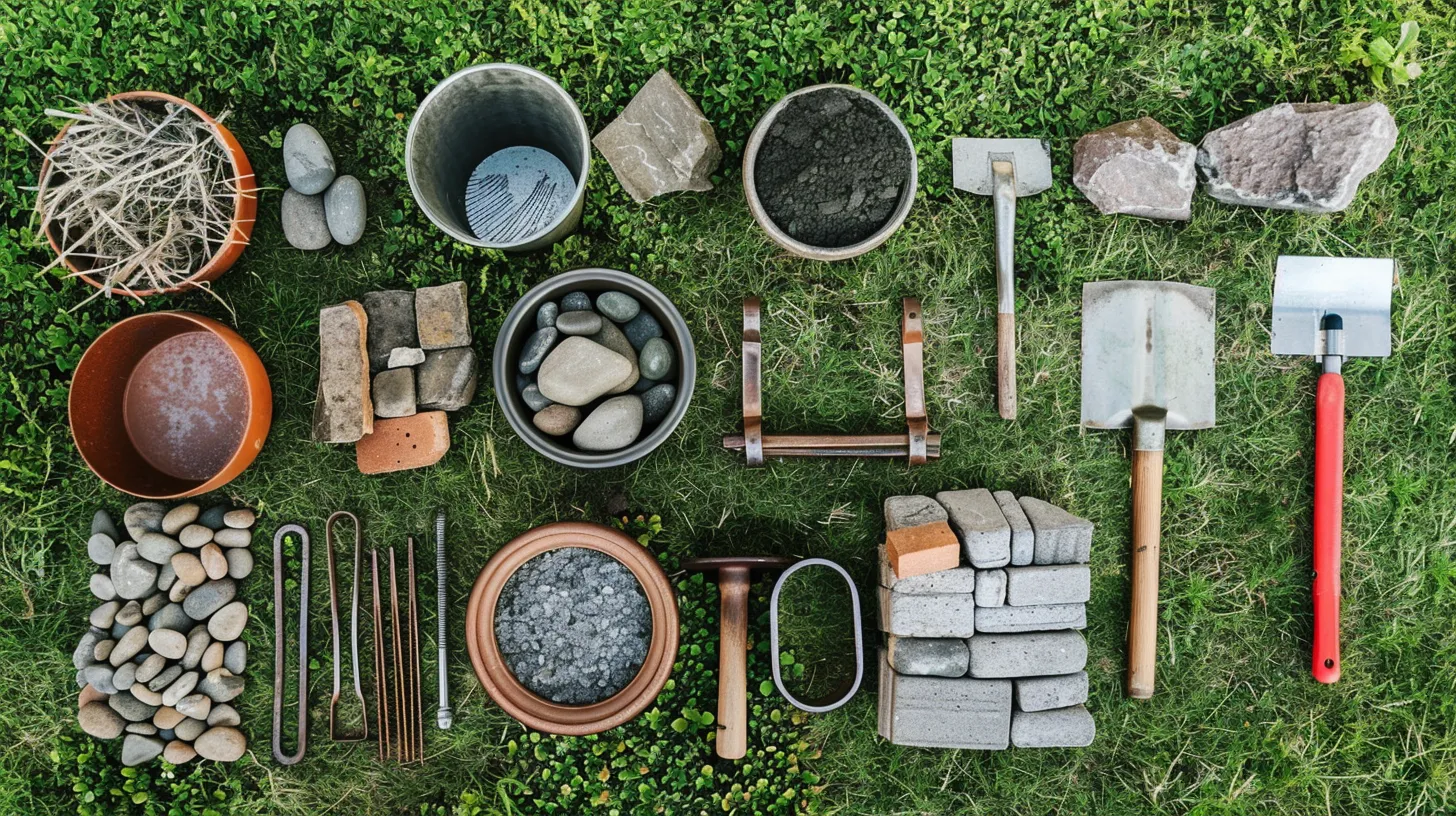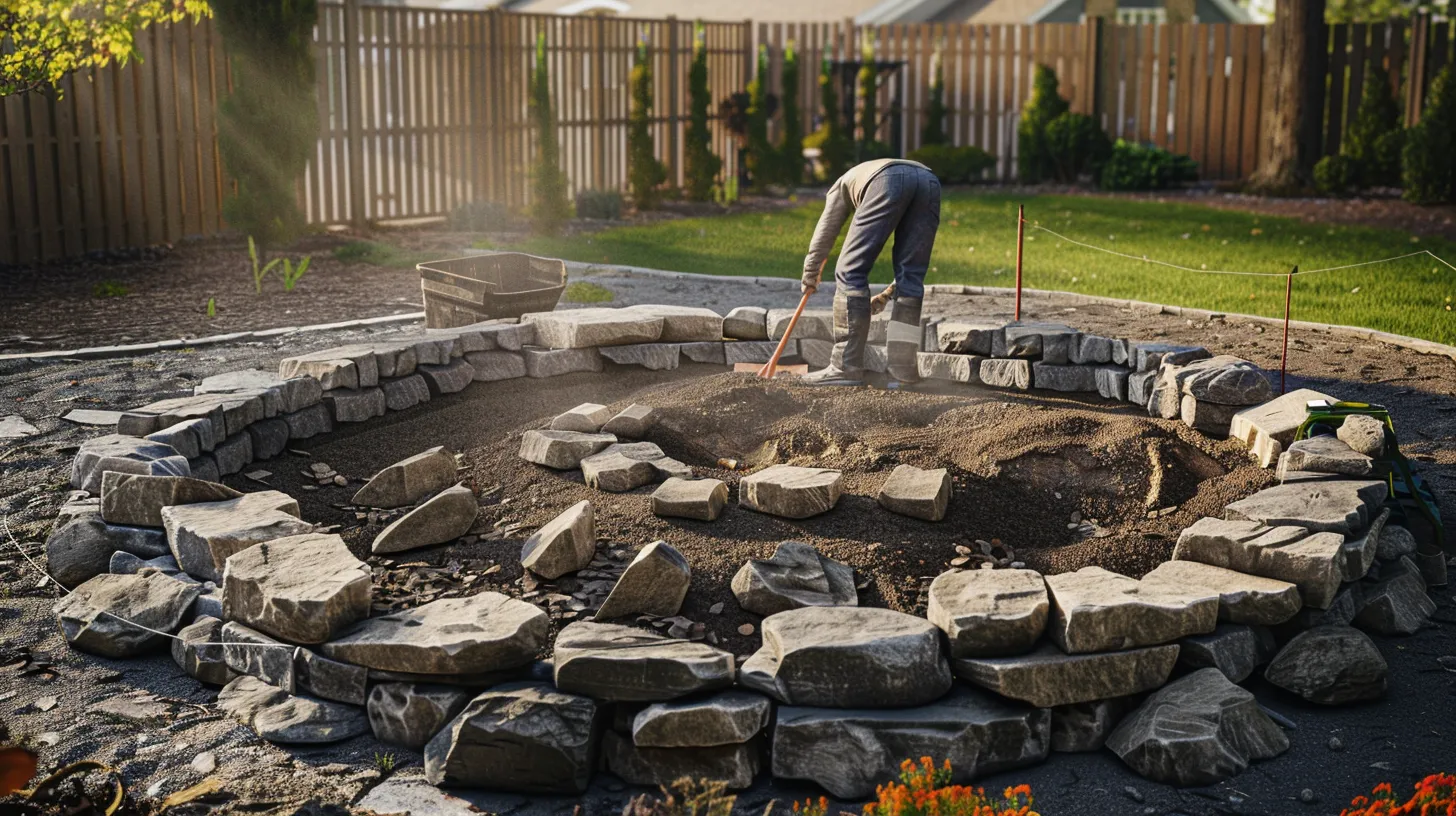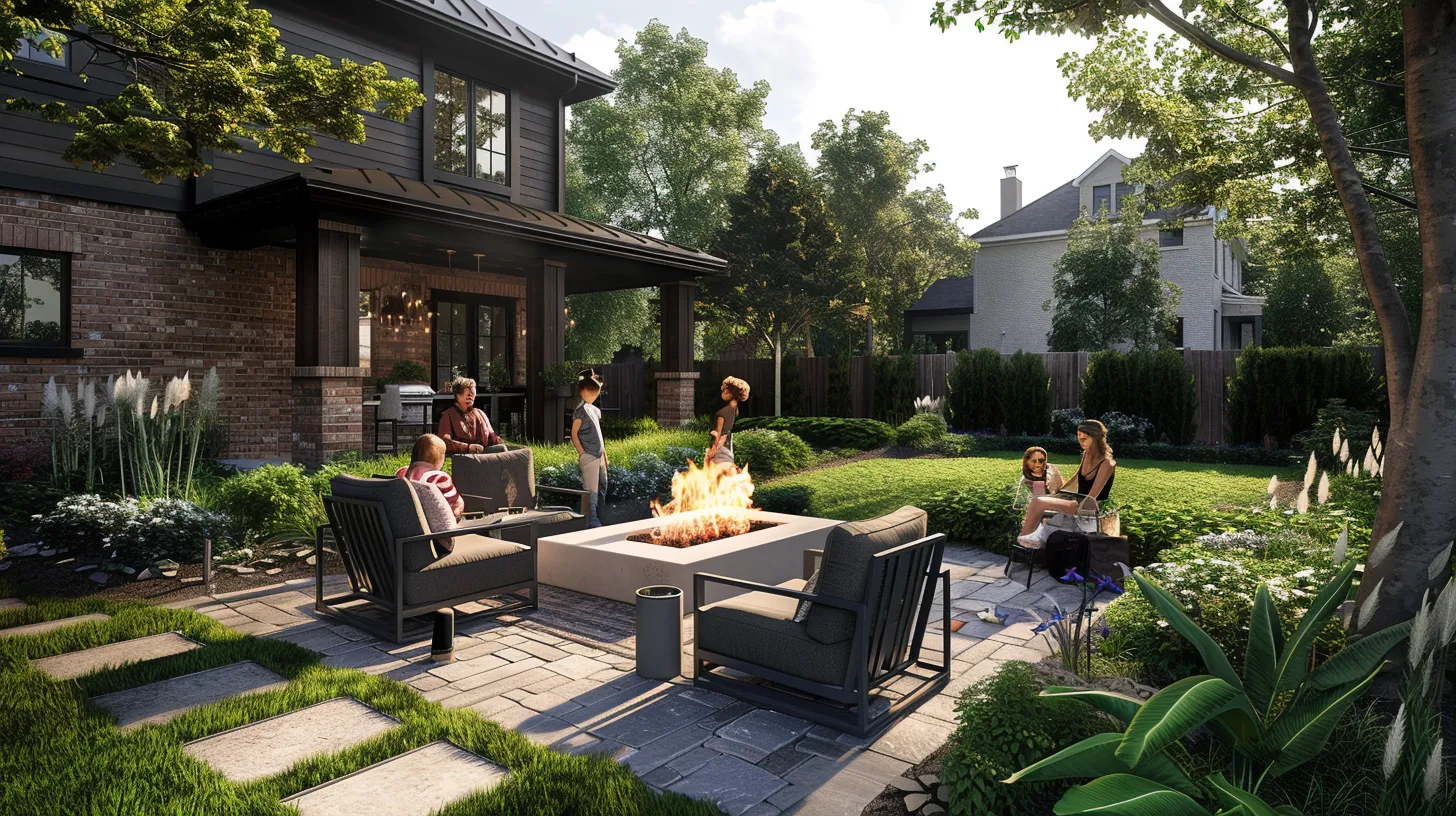Revealing your backyard into a enchanting retreat is possible by adding a DIY fire pit , provided you adhere to essential safety and design guidelines. To begin with, make sure the fire pit is situated at least 15 feet away from any structures or flammable materials to prevent potential hazards. Utilize quality materials like a steel ring and fire-resistant stones, available in kits from retailers such as Lowe's. Follow a detailed construction process to lay a stable foundation and assemble the pit securely. Consider adding decorative elements and comfortable seating to enhance the ambiance. Exploring further will uncover additional creative possibilities and detailed safety tips.
Choosing the Right Location

Selecting a strategic location for your fire pit is crucial, as it must be at least 15 feet away from structures and combustible materials to guarantee safety. This distance mitigates the risk of sparks or embers igniting nearby flammable objects , ensuring a secure environment for enjoying your fire pit. Additionally, it is critical to take into account the proximity of overhanging obstacles such as tree limbs, which could pose a fire hazard if too close.
Furthermore, to comply with local safety standards and maintain good relations with your neighbors, it is important to be aware of any neighborhood covenants or regulations regarding fire pit installation. Ensuring that your fire pit does not encroach on neighbors' play areas also minimizes the risk of accidental injuries, preserving both safety and community harmony.
Another key factor in selecting the right location for your fire pit involves accessibility to a water source . Positioning your fire pit near water ensures you can quickly manage any emergencies should they arise, providing an extra layer of safety. This strategic placement not only enhances the functionality of your fire pit but also underpins the overall safety framework necessary for peaceful and enjoyable outdoor gatherings.
Selecting Materials and Tools

When planning the construction of your fire pit, selecting the right materials and tools is vital for both durability and ease of assembly. For those starting on a DIY outdoor fire pit project , choosing quality materials guarantees longevity and safety. A standard kit from Lowes, including a steel ring and 36 stones, offers a foundational package for around $200. These stones are designed to withstand high temperatures and provide structural integrity to your fire pit.
To prepare the base, paver base is essential, typically requiring six bags at $3.82 each to create a solid foundation. Additionally, enhancing the aesthetic of your fire pit area with Pond Pebbles can be achieved with about three bags at $4.15 each. To make sure the stones remain securely in place, using Landscape Adhesive by Liquid Nails, priced at $4.97 for a 10oz tube, adds an extra layer of stability.
The right tools are just as important as the materials. Essential items for the construction of your fire pit include a metal tamp for compacting the base, a shovel for preparation, a level to guarantee evenness, and a rubber mallet to set the stones without chipping them. These tools assist in building a safe and sturdy fire pit.
Step-by-Step Construction Process

Having gathered the necessary materials and tools, let's now focus on the step-by-step construction process of the DIY fire pit . Begin by creating a flat area that exceeds the fire pit's diameter. This guarantees ample space for assembly and safety considerations. Distribute 6 to 8 bags of paver base over this area to form a stable foundation, essential for the longevity and safety of your fire pit.
Next, position the steel fire ring at the center. This will act as a guide to accurately lay and align the stones. Make sure each stone is level and flush with its neighbors to form a solid base. As you build the fire pit, stagger the stones together, adding layers to increase stability. If desired, apply landscape adhesive between the layers to secure the stones together, enhancing the structure's durability against elements and usage.
To promote efficient air circulation and proper ventilation , which are important for safety and fire management, add a 6-inch layer of pond stones inside the perimeter before setting the steel fire ring in place. This arrangement not only aids in airflow but also contributes to the aesthetic of your DIY fire pit. Now, gather around your newly built fire pit, ready for memorable evenings of warmth and camaraderie.
Design Variations and Ideas

Exploring various design variations and ideas allows homeowners to tailor their DIY fire pits to both functional needs and aesthetic preferences. From the simple charm of tabletop fire pits to elaborate koi pond fire features, the range of design ideas is vast. Raised and in-ground styles offer a more traditional approach, while modern concrete and stacked stone fire pits provide a sleek, contemporary look. Upcycling materials for DIY construction not only showcases unique designs but also adds a personal touch to outdoor spaces.
Seating options play a pivotal role in enhancing the comfort and style around fire pits. Choices vary from zero gravity chairs for ultimate relaxation to weatherproof daybeds that add a touch of luxury. Wood benches and sectional sofas can accommodate larger groups, making the fire pit a central gathering spot.
Decorative elements like flame-resistant glass and metal art can elevate the visual appeal of the fire pit area. Incorporating gravel accents or decorative concrete blocks can complement the overall design theme. To merge aesthetics with functionality, securely attached, heat-resistant grill grates can be added, enabling delightful outdoor cooking experiences. Each of these components contributes to a safe, enjoyable, and aesthetically pleasing fire pit setup.
Essential Safety Tips

Prioritizing safety measures is vital when enjoying the warmth and ambiance of a DIY fire pit. When constructing your fire pit, make sure the materials used are durable and suitable for high temperatures. Structuring the first layer with fire-resistant bricks or stones can greatly reduce risks. It's important to have a fire extinguisher or a reliable water source nearby, ready to use in case of an emergency. This proactive step ensures you can quickly address any unexpected flare-ups or sparks.
Never leave the DIY fire pit unattended, especially when in use. An unwatched fire can easily escalate, leading to accidents or uncontrolled fires that might endanger your outdoor space. Additionally, always check the weather conditions before lighting a fire; high winds can spread flames beyond the confined area of your fire pit. Employing spark screens is another important safety measure; these screens help contain embers and prevent sparks from escaping, protecting both the environment and nearby inflammable objects.
Lastly, educate any guests about the safety rules of the fire pit. Making sure everyone is aware of how to act responsibly around the fire pit will further enhance the safety of your gathering, making your outdoor experiences both enjoyable and secure.










